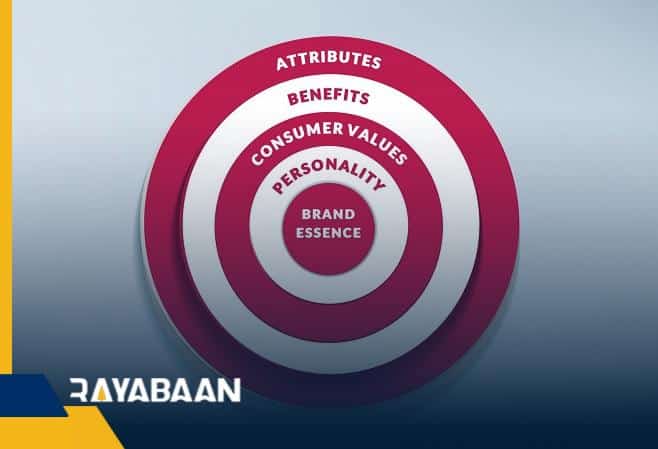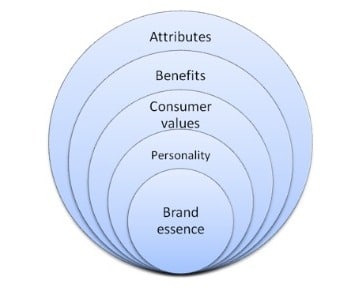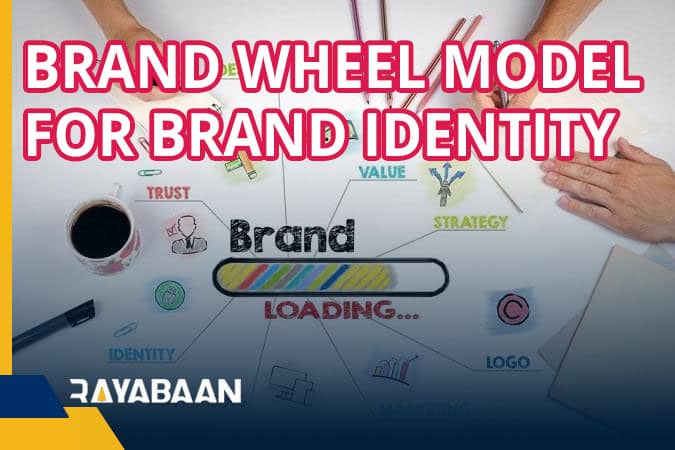Brand wheel model for Brand identity
In today’s complex and challenging world, we are all faced with more and more options and less and less time to make decisions and choices.
Based on this, brands’ ability to facilitate consumer decisions, reduce risk and set expectations is invaluable.
In times of competition, only brands with a clear and distinct identity can stand out.
The further we go, the more important the brand and the role it plays in the success of the business.
Strong branding and creating a strong brand are one of the most important issues companies have faced over the years.

Brand wheel model for Brand identity
This means that the brand is more than the product and its performance benefits as suggested by Mr. David Acker:
Identity + product = brand

Model components Brand Wheel – brand essence wheel
- Attributes
- Benefits
- Values
- Personality
- Brand Essence
The first step in the implementation of this model is the design of the brand benefit stage, which begins by defining the desired product characteristics from a business perspective.
Then, with research on the target population of the brand (current customers or regular customers), the visible and hidden benefits that the audience is looking for to get this product are defined and classified.
- Functional benefits: Benefits related to product performance, defined as points of similarity (POP) and points of difference (POD) in other brands.
- Financial Benefits: Financial saving benefits customers.
- Emotional benefits: When a brand is functionally close, audiences are drawn to it, which gives them happiness, confidence, security, strength, and more.
- Benefits of self-expression: Improving the standard of living and the desire of people to create a special and prestigious position in society is an important issue that brands present to the public for their benefit.
- Social Benefits: A sense of belonging to certain groups has always been important given the propensity of people to socialize. This factor is the most important motive for creating community brands.
That is, those benefits that are beyond the capabilities of the company or are contrary to the goals and values of the brand are removed or modified.
Added to these benefits are benefits from the heart of the company and its research and development department.
Among the advantages, the importance of one or more limited items is much greater than others, and this is considered the reason for the brand, which is called the essence of the brand or its philosophy.
On the one hand, the company has the necessary opportunity to present it to the public, on the other hand, the customers also demand it.
The point of this section is that the amount of benefit perceived by listeners decreases over time.
The task of a brand strategist is to manage the benefits and move them within the brand’s value framework through marketing elements.
One of the pitfalls brands see is a lack of consistency in the promises they make to audiences.
Determining the principles of values and determining the brand’s dos and don’ts can greatly protect the brand from instability and instability.
With the passage of time and the increasing pace of change, including the changes and unpredictability of the value framework, the need for a structure that balances profit and value over time seems more important
At first, these qualities were only perceptions, which later became conscious, that is, qualities that contain all the senses.
Therefore, emotional elements, include all material effects with the five senses, including name, logo, symbol, slogan, packaging, music, perfume, taste, and any kind of sign or unique symbol. developed according to the brand personality, within the brand value.
A test sample of the Malt H brand (San H sub-brand)
The Son H brand belongs to Alford Company, which produces all kinds of concentrates, juices, drinks, and syrups, which started its operations in 1356 in the cave industrial city of Save City.
- Benefits of the brand: quenches thirst, restore the body after daily work, feels light, drinks the gods, refreshes.
- Brand value: maintaining quality and freshness in all conditions, both in production technology and in raw materials, matching the taste of products with the various tastes of customers.
- Brand personality: personality characteristics of the Malt H product; Courage, courage, strength, strength, seeking
- Attribute layer: Logo of ground cream and brown malt, a sign of naturalness, bitter taste, black color, large glasses

- Is this sign easy to understand for Iranian people?
- Are the benefits and features based on the research and findings of the psyche of the public?
In this article, we talked about the Brand wheel model for Brand identity and brand essence wheel, but we think that we can still use your experience to produce a better and more comprehensive article.
Share your experiences with us.

